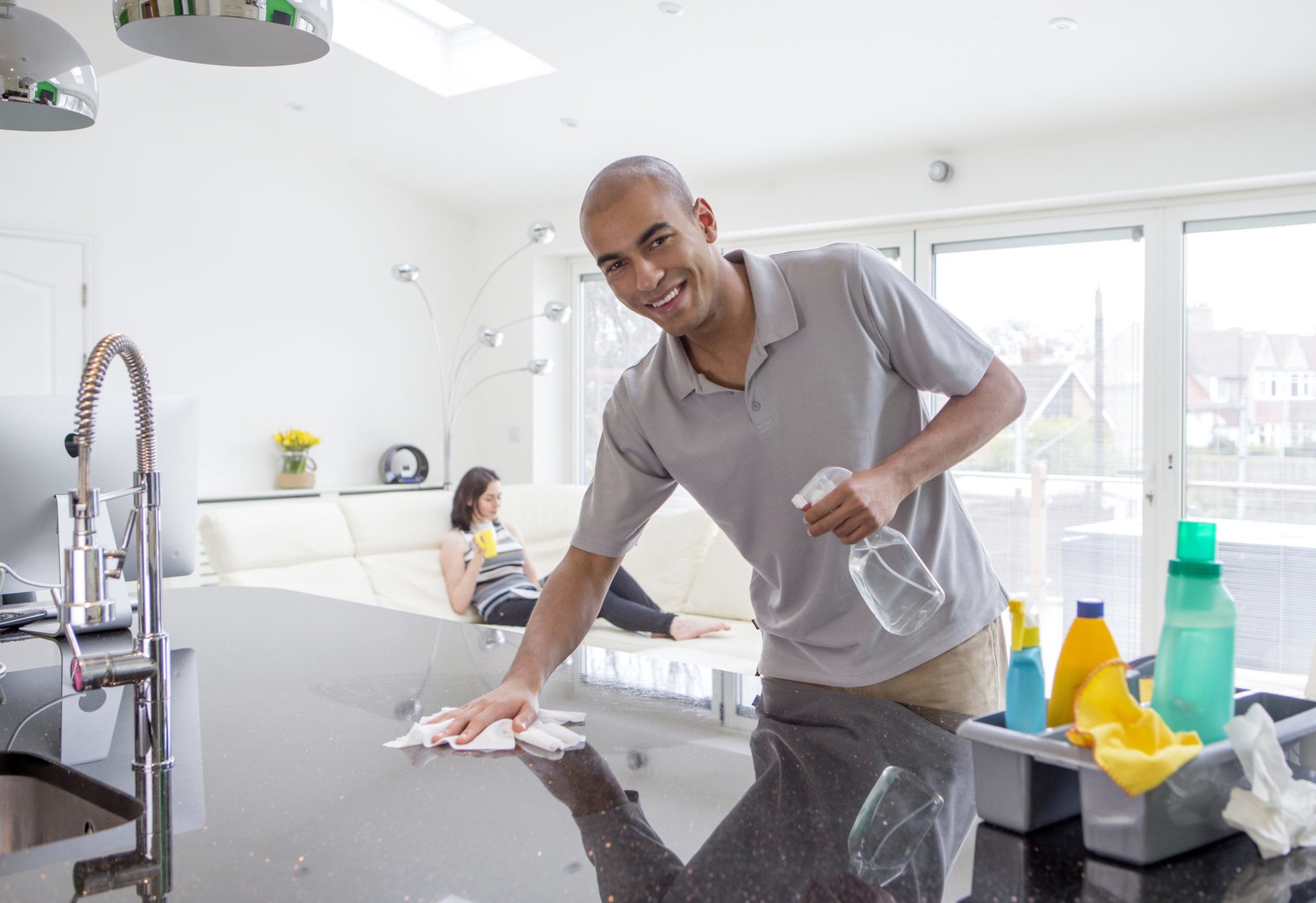
If you’ve honed your cleaning skills, chances are good that you have discovered the germ-killing power of bleach.
But bleach isn’t an all-purpose cleaner. It needs to be used tactically and with safety considerations top of mind. Before you buy that next jug of Clorox, read on so that you know what not to do with it.
1. Never use bleach without wearing protective gear
Sodium hypochlorite (the active ingredient in bleach) is a powerful corrosive that can damage skin, eyes and lungs.
When it’s time to use bleach, follow basic safety precautions and suit up. Protect your hands and arms with long rubber gloves. Wraparound safety goggles are ideal for shielding eyes from inadvertent splashes.
Finally, open windows and doors to promote cross-ventilation and avoid a build-up of fumes.
2. Never use bleach undiluted
When it comes to disinfecting power, more bleach isn’t better. In an interview with AARP, Robert Laumbach, an associate professor at Rutgers University’s Environmental and Occupational Health Sciences Institute, emphasizes that higher concentrations of bleach are ineffective and potentially harmful.
To stay safe and get the most bang out of your buck, dilute bleach properly: Add no more than a half-cup of bleach per gallon of water.
3. Never dilute bleach with hot water
The hotter the water, the deeper the clean — unless you’re using bleach. Verity Mann, head of testing at the Good Housekeeping Institute, says mixing bleach with hot water is the one mistake we’re all making with bleach.
The chemicals that make bleach so effective break down more quickly in hot water. For the most effective clean, use cold or tepid water as your base.
4. Never mix bleach with other cleaners
If one cleaner is good, two or three must be better, right? Nope.
Some household cleaners should never be mixed, because of the dangerous chemical reactions they create.
According to Good Housekeeping, avoid mixing bleach with:
- Ammonia: Together, bleach and ammonia create a toxic gas called chloramine. Even brief exposure to chloramine causes eye, nose, throat and lung irritation.
- Rubbing alcohol: When mixed, bleach and rubbing alcohol create chloroform, a colorless liquid that quickly evaporates into a toxic gas.
- Vinegar: When combined, bleach and vinegar create chlorine gas. Chlorine gas can lead to breathing problems, coughing and eye irritation.
The simplest rule of thumb? Don’t mix bleach with anything other than plain water.
5. Never wash produce with bleach
The coronavirus pandemic has made everyone more aware of food safety and sanitation But washing fresh fruits and vegetables with diluted bleach sounds a little … well, bananas. In the spirit of healthy eating, lettuce embrace a saner and safer approach.
According to EatingWell magazine, it’s important to remember that bleach is a harsh, poisonous chemical that should never be used on food.
Instead, follow EatingWell’s guide to washing produce for simple and effective food sanitation methods that can’t be beet. (OK, last pun. I’m done.)
6. Never buy bleach in bulk
When it comes to bleach, restrain your bargain-hunting instincts and don’t buy in bulk. The Scripps Research Institute reports that bleach has a shelf life of about six months. In fact, its disinfecting power lessens by 20% each year.
To get the most out of your bottle of bleach, store it properly. The American Cleaning Institute recommends storing bottles of household bleach away from direct sunlight in a dry area where the temperature range is 50°F to 70°F.
7. Never use bleach on stone countertops
We don’t think of stone as a porous material, but it is. According to Merry Maids, even when properly diluted, bleach can eat through the sealants that protect marble, granite and quartz countertops. Eventually, the chlorine will dull the surface and cause discoloration and pitting.
Instead of bleach, clean stone countertops using a cotton or microfiber cloth and a mixture of water and liquid dish soap.
8. Never use bleach on hardwood floors
Thinking of cleaning your gorgeous hardwood floors with bleach? Think again. More porous than stone, wood simply absorbs bleach. Since it can never be completely rinsed away, the bleach left behind will break down the natural fibers that give hardwood floors their flexibility and strength.
This Old House offers some excellent hardwood floor cleaning tips. Instead of bleach, use a damp microfiber mop and neutral cleaning solution like Bona Free & Simple Hardwood Floor Cleaner.
9. Never pour bleach down the drain
If your home has a septic tank, use bleach sparingly. Although septic systems can handle the moderate amount of diluted bleach used for household laundry, too much can lead to some extremely “messy” situations.
According to Septic Maxx, a nationwide commercial and residential septic service, chemicals in chlorine bleach kill the beneficial bacteria that septic systems rely on to break down solid waste. Over time, a backup of solids can lead to clogged drains and toilets, burst pipes or a complete septic system failure.
10. Never wear your favorite jeans when using bleach
Unless you’re going for that tie-dye look, avoid using bleach while wearing your favorite jeans … or favorite anything.
Bleach has a way of showing even the most careful cleaner who’s boss. In a split second, a spill or splash can ruin clothes and turn a quick household chore into a moment of permanent regret. Take a little extra time and change into those old sweats you keep hidden in the back of the closet. No one’s watching.





Add a Comment
Our Policy: We welcome relevant and respectful comments in order to foster healthy and informative discussions. All other comments may be removed. Comments with links are automatically held for moderation.